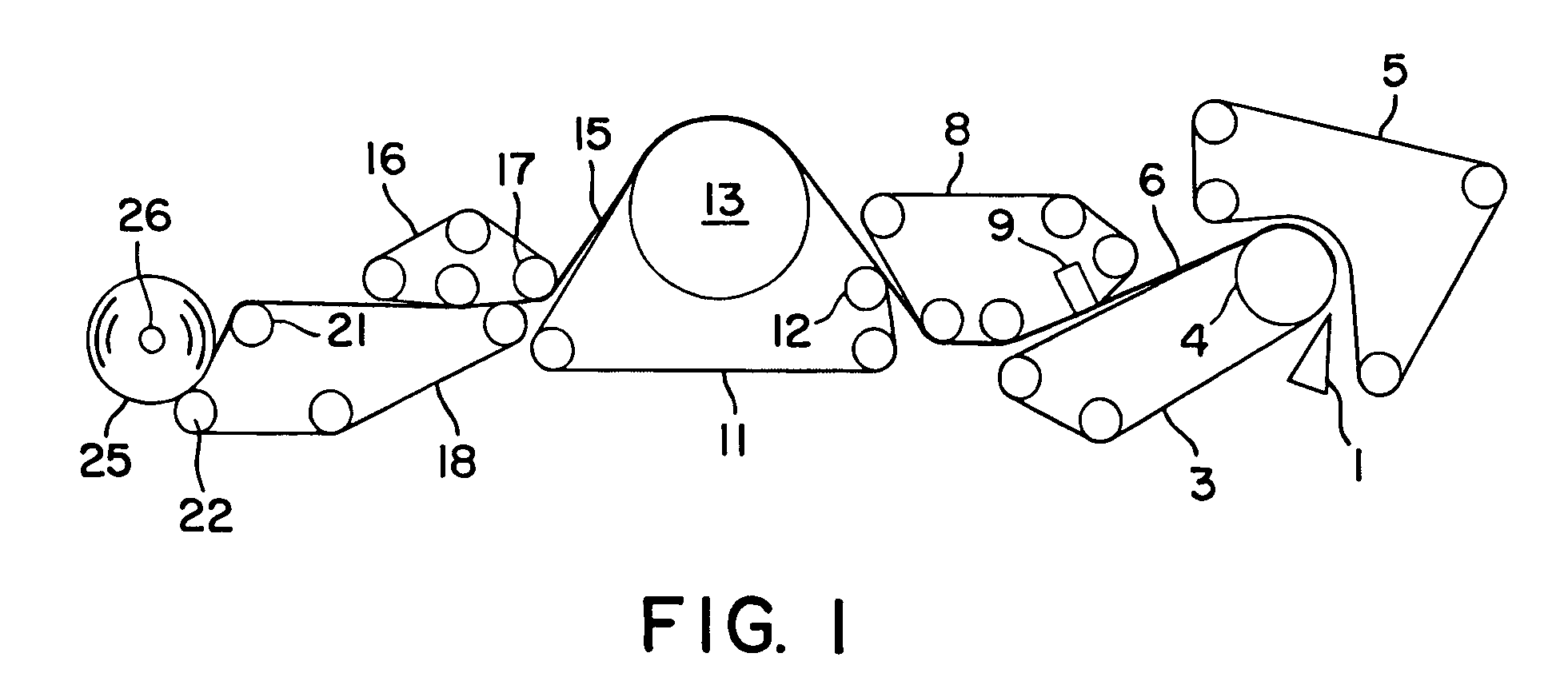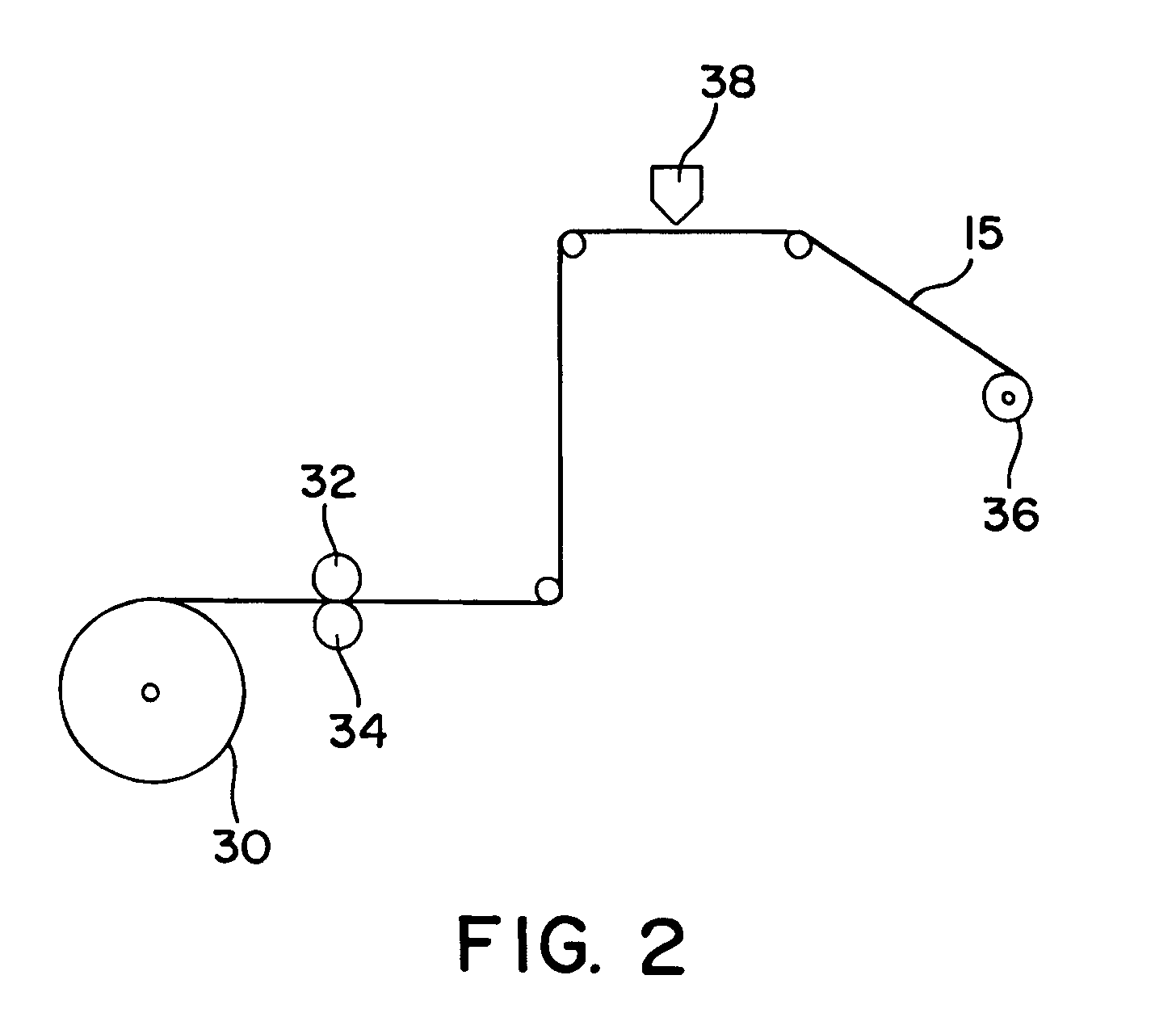Nonwoven webs having reduced lint and slough
a technology of nonwoven webs and lint, which is applied in the field of nonwoven webs having reduced lint and slough, can solve the problems of affecting the strength of nonwoven materials, adversely affecting other characteristics of materials, slough and lint, etc., and achieves significant adversely affecting the softness properties and wiping properties of the webs
- Summary
- Abstract
- Description
- Claims
- Application Information
AI Technical Summary
Benefits of technology
Problems solved by technology
Method used
Image
Examples
example no.1
EXAMPLE NO. 1
[0133] To illustrate the properties of the product made in accordance with the present invention, tests were conducted on several samples of wet wipe materials in order to investigate the properties of each. Included in this example are samples of 3 general types of materials. The first was a control group including a three layered laminated article with two coform outer layers and an elastomeric inner layer as described in the current application. The second, also described in the above application, was a similar product to the first control group, but with an added polypropylene meltblown layer of varying thinkness on the exposed surfaces of the outer coform layers. The third type of sample was a high pulp content nonwoven composite fabric, available from the Kimberly Clark Corp. under the registered trademark Hydroknit (HK). The samples with polypropylene meltblown exposed layer had veneer thicknesses of 4 gsm, 6 gsm, 8 gsm, and 10 gsm, resulting in a total of 6 samp...
example no.2
EXAMPLE NO. 2
[0146] To demonstrate the utility of webs treated according to the present invention, a pilot meltblown line was operated to provide a light meltblown coating of Findley H-1296 adhesive made by Bostik Findley, Inc. (Middleton, Mass.), which is believed to comprise ethylene vinyl acetate. The trials were conducted on a J&M meltblown line made by J&M Laboratories, Inc. (Dawsonville, Ga.). The meltblown was applied onto webs of uncalendered, uncreped through-air dried (UCTAD) tissue basesheets, made generally according to the teachings of U.S. Pat. No. 5,672,248, issued to Wendt. et al. on Sep. 30, 1997, and U.S. Pat. No. 5,607,551, issued to Farrington et al. on Mar. 4, 1997.
[0147] A first UCTAD tissue basesheet comprised a three-layered web formed using a stratified headbox. The two outer layers each had a target basis weight of 8 grams per square meter (gsm) of 100% bleached kraft Alabama hardwood with debonder added at a level of 5.1 kg per metric tonne of fiber. The ...
PUM
| Property | Measurement | Unit |
|---|---|---|
| Length | aaaaa | aaaaa |
| Fraction | aaaaa | aaaaa |
| Fraction | aaaaa | aaaaa |
Abstract
Description
Claims
Application Information
 Login to View More
Login to View More - R&D
- Intellectual Property
- Life Sciences
- Materials
- Tech Scout
- Unparalleled Data Quality
- Higher Quality Content
- 60% Fewer Hallucinations
Browse by: Latest US Patents, China's latest patents, Technical Efficacy Thesaurus, Application Domain, Technology Topic, Popular Technical Reports.
© 2025 PatSnap. All rights reserved.Legal|Privacy policy|Modern Slavery Act Transparency Statement|Sitemap|About US| Contact US: help@patsnap.com



